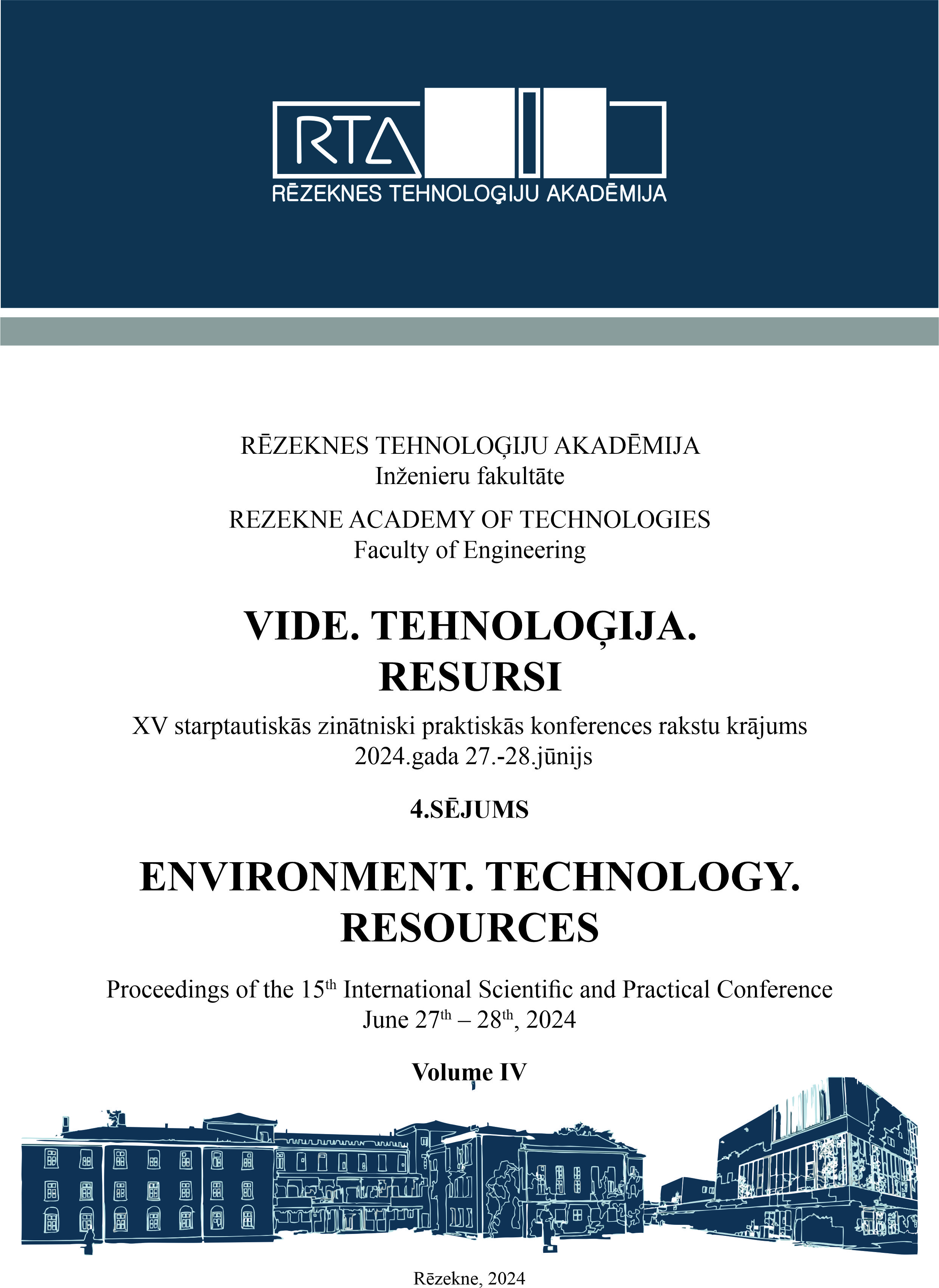APPLICABILITY OF JARUS SORA TO STATE UAS OPERATIONS IN DISASTER RELIEF
DOI:
https://doi.org/10.17770/etr2024vol4.8195Keywords:
JARUS SORA, state UAS, applicability, disaster reliefAbstract
The use of modern unmanned aviation technologies when conducting search and rescue operations, respectively when overcoming the consequences of disasters is an economically justified approach to increase the effectiveness of operations, reducing the costs of their implementation. The nature of the operations implies working in an environment of high uncertainty with variety of stakeholders, which requires the implementation of additional measures to achieve the target levels of aviation safety. To tackle the risks associated with any Unmanned Aerial Systems (UAS) operations JARUS (Joint Authorities for Rulemaking in Unmanned Systems) has proposed a document called SORA (Specific Operations Risk Assessment) adopted as acceptable means of compliance by many civil aviation authorities. Admittedly, SORA was developed with civil use of UAS in mind. However, considering its comprehensiveness in risk assessment it is a good starting point to evaluate its applicability at disaster relief operations and adaptability to state aircraft operations. As a rule, activities to overcome the consequences of disasters are the responsibility of the state, therefore it is normal to expect that the capabilities to use UAS will be created and predetermines the relevance of the presented topic. In the current article the team analyses SORA applicability from the perspective of emergency services as state aircraft operations. Thus, the purpose of this article is to explore the possibilities and to justify the need of implementing a timely procedure and to show an example risk analysis performed for this type of operations, when operating with state unmanned aircraft. Of course, some of the conclusions drawn here for emergency services can be easily transposed to other state UAS operations.References
S. Sudhakar, V. Vijayakumar, C. S. Kumar, V. Priya, L. Ravi and V. Subramaniyaswamy, “Unmanned Aerial Vehicle (UAV) based Forest Fire Detection and monitoring for reducing false alarms in forest-fires,” Computer Communications, vol. 149, pp. 1-16, 2020.
B. Aydin, E. Selvi, J. Tao and M. J. Starek, “Use of Fire-Extinguishing Balls for a Conceptual System of Drone-Assisted Wildfire Fighting,” Drones, vol. 3, no. 1, p. 17, 2019.
P. T. Thavasi and C. D. Suriyakala, “Sensors and Tracking Methods Used in Wireless Sensor Network Based Unmanned Search and Rescue System -A Review,” Procedia Engineering, vol. 38, pp. 1935-1945, 2012.
C. V. Tilburg, “First Report of Using Portable Unmanned Aircraft Systems (Drones) for Search and Rescue,” Wilderness & Environmental Medicine, vol. 28, no. 2, pp. 116-118, 2017.
P. Petrides, P. Kolios, C. Kyrkou, T. Theocharides and C. Panayiotou, Disaster Prevention and Emergency Response Using Unmanned Aerial Systems, A. Stratigea, E. Kyriakides and C. Nicolaides, Eds., Springer International Publishing, 2017, pp. 379-403.
L. Apvrille, T. Tanzi and J.-L. Dugelay, “Autonomous Drones for Assisting Rescue Services within the Context of Natural Disasters,” in 2014 XXXIth URSI General Assembly and Scientific Symposium (URSI GASS), Beijing, China, 2014.
M. Quaritsch, K. Kruggl, D. Wischounig-Strucl, S. Bhattacharya, M. Shah and B. Rinner, “Networked UAVs as Aerial Sensor Network for Disaster Management Applications,” e & i Elektrotechnik und Informationstechnik, vol. 127, no. 3, pp. 56-63, 2010.
P. Janik, M. Zawistowski, R. Fellner and G. Zawistowski, “Unmanned Aircraft Systems Risk Assessment Based on SORA for First Responders and Disaster Management,” Applied Sciences, vol. 11, no. 121, pp. 53-64, 2021.
International Civil Aviation Organization, Convention on International Civil Aviation, 9 ed., 2006.
JARUS - Joint Authorities for Rulemaking on Unmanned Systems, “JARUS - Joint Authorities for Rulemaking on Unmanned Systems,” [Online]. Available: http://jarus-rpas.org/. [Accessed 26 February 2024].
Joint Authorities for Rulemaking of Unmanned Systems, JARUS guidelines on Specific Operations Risk Assessment (SORA), Joint Authorities for Rulemaking of Unmanned Systems, 2019.
K. H. Terkildsen and K. Jensen, “Towards a Tool for Assessing UAS Compliance with the JARUS SORA Guidelines,” in International Conference on Unmanned Aircraft Systems (ICUAS), Atlanta, 2019.
D. Rothe, “Development of System Architectures on the Basis of SORA in the Specific Category and Qualitative Estimation of the Implementation Efforts,” Institut für Flugsystemtechnik, Braunschweig, 2020.
Downloads
Published
Issue
Section
License
Copyright (c) 2024 Hristo Stanev, Stefan Hristozov

This work is licensed under a Creative Commons Attribution 4.0 International License.



